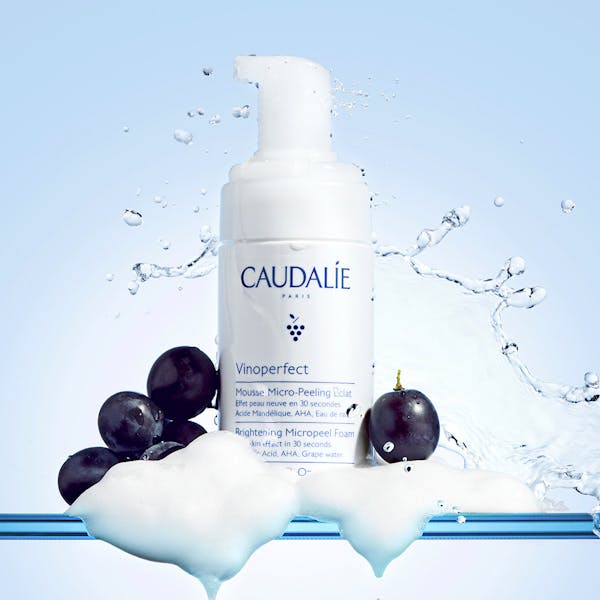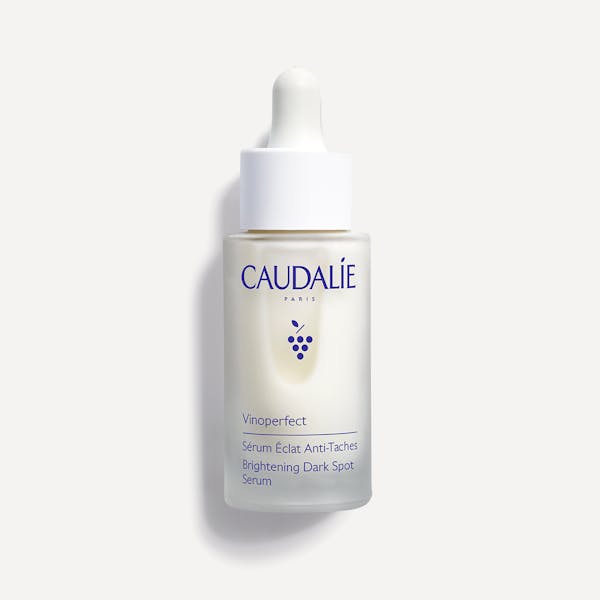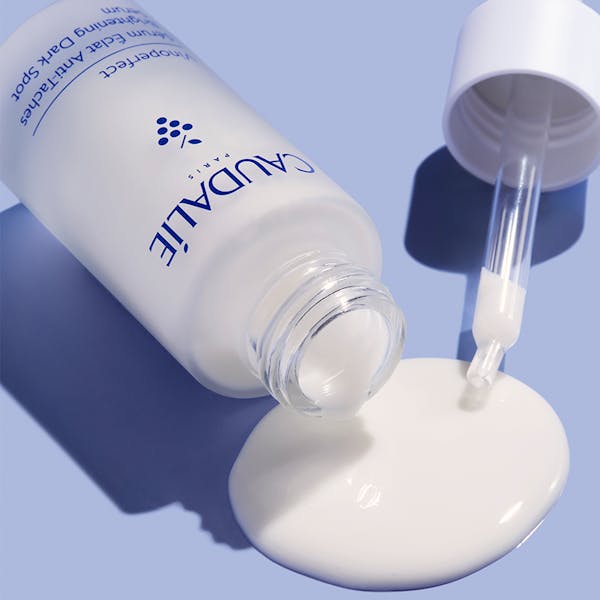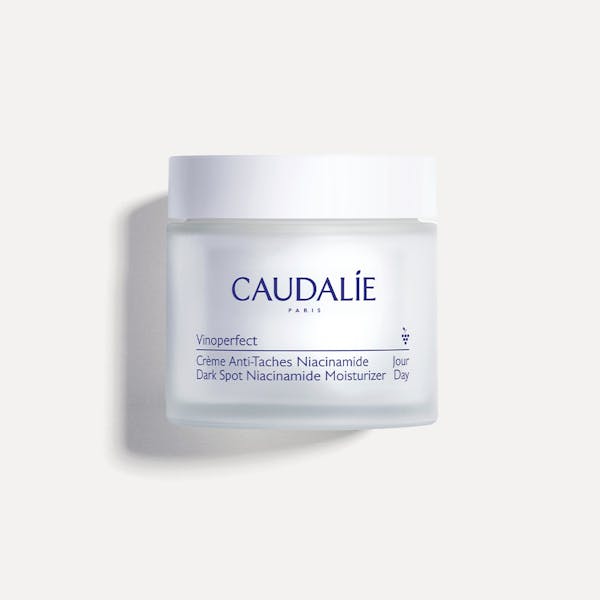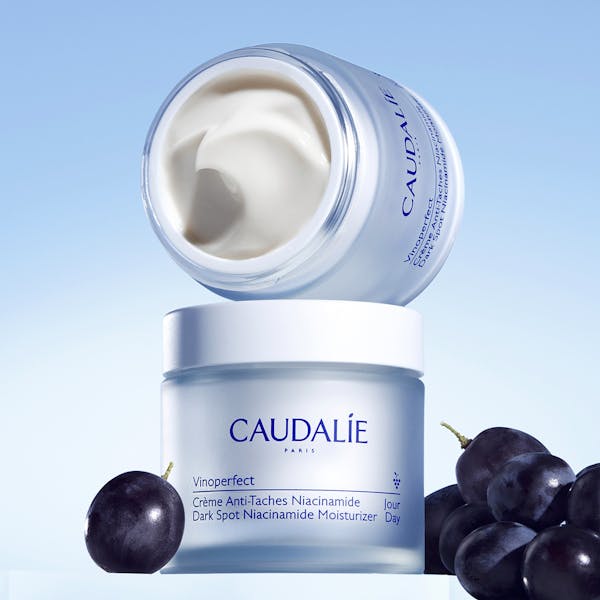Post-inflammatory hyperpigmentation can be a lasting reminder of skin inflammation, but with the right approach, it's possible to reduce its appearance. Caudalie's Vinoperfect routine is designed to target dark spots and hyperpigmentation, harnessing the power of Viniferine to deliver visible results. By combining this routine with a deeper understanding of PIH causes and treatments, you can unlock a more even toned and radiant complexion. As we explore the complexities of PIH, we'll examine the role of skincare practices and natural ingredients in promoting a brighter, more luminous skin tone.
Summary
What is post-inflammatory hyperpigmentation?
Post-inflammatory hyperpigmentation (PIH) refers to the dark spots or discolouration that appear on the skin after inflammation or injury.
The symptoms of post-inflammatory hyperpigmentation
The symptoms of PIH can vary in appearance and severity. They may manifest as:
Dark spots or patches that can range in colour from light brown to deep brown or even black,
Lesions that can be flat or raised, with varying textures and sizes,
Discolouration that can be localized to a specific area or spread across a larger region,
Affected areas that can be tender to the touch or asymptomatic,
Skin changes that can be more noticeable in individuals with lighter skin tones, although PIH can occur in people of all skin types.
What distinguishes PIH from other dark spots?
PIH is distinct from other types of hyperpigmentation due to its association with prior inflammation or injury. This can include conditions like acne, eczema, psoriasis, or injuries such as cuts, burns, or surgical incisions. The inflammation triggers the production of excess melanin, leading to the characteristic dark spots or discoloration. Understanding the underlying cause of PIH is crucial for developing an effective plan to get rid of hyperpigmentation.
Understanding the causes of PIH
To effectively address post-inflammatory hyperpigmentation, it's essential to understand the underlying causes that lead to its development.
The role of melanin overproduction
Melanin overproduction is a key factor in the development of PIH. When the skin experiences inflammation or injury, it can trigger an increase in melanin production as a natural response to protect the skin.
This excess melanin can lead to the formation of dark spots or discolouration, particularly in individuals with darker skin tones. The type of melanin produced, whether it's eumelanin or pheomelanin, can also influence the appearance and severity of PIH.
What triggers inflammation and PIH?
Inflammation and PIH can be triggered by a variety of factors, including:
Acne and other skin conditions that cause inflammation,
Injuries such as cuts, burns, or surgical incisions,
Skin irritations or allergic reactions,
Certain medical treatments or procedures, such as chemical peels or laser therapy,
Genetic predisposition to hyperpigmentation or inflammation.
How to get rid of post inflammatory pigmentation?
Addressing post-inflammatory hyperpigmentation requires a comprehensive approach that incorporates gentle skincare practices and targeted treatments.
Best skincare practices for sensitive skin
To soothe and calm sensitive skin, it's essential to adopt a gentle skincare routine. This involves using fragrance-free and hypoallergenic products, avoiding harsh exfoliants and products with artificial fragrances or dyes.
Gentle cleansing and moisturizing are also crucial to maintain the skin's natural barrier function and protect it from further irritation and inflammation. By adopting these practices, you can help to reduce the appearance of PIH and promote a more even-toned complexion.
Harnessing the power of natural ingredients
The Vinoperfect routine by Caudalie harnesses the power of several potent ingredients to address PIH. The key ingredients include:
Viniferine: a Caudalie patented ingredient derived from vine sap, which provides an exceptional dark spot correcting action. This ingredient is 62X more effective than vitamin C(1), without being photosensitising and 43% more effective than Niacinamide 10%(2), all while being anti-blue light.
Niacinamide: also known as Vitamin B3, it diminishes enlarged pores and soothes skin.
Glycolic acid for hyperpigmentation: eliminates dead skin cells and provides radiance.
Fruit acids: 100% natural origin and made in France, AHAs stimulate cell renewal for a brighter complexion.
White peony: boosts radiance, illuminates, evens complexion.
Dermatology treatments for post-inflammatory hyperpigmentation
For more severe cases of PIH, dermatological treatments may be necessary to achieve optimal results. These treatments are typically performed by a qualified healthcare professional, such as a dermatologist or aesthetic doctor.
Some common dermatological treatments for PIH include chemical peels, laser therapy, and microneedling. These treatments can help to reduce the appearance of PIH by promoting cell turnover, reducing inflammation, and improving skin texture.
The Vinoperfect routine for PIH
The Vinoperfect routine by Caudalie is a comprehensive skincare regimen that targets post-inflammatory hyperpigmentation:
1. First, gently exfoliate and hydrate your skin with the Brightening Micropeel Foam, which contains organic grape water, fruit acids, and mandelic acid. This step is further enhanced by the Face Peel Mask with Glycolic Acid Glycolic Acid, featuring Viniferine, glycolic acid, and fruit acids to correct dark spots and stimulate cell renewal.
2. Next, boost your skin's radiance with the Glycolic Acid Essence, which combines white peony and organic grape water to hydrate and illuminate the skin. This is followed by the Dark Spot Serum for Radiance, containing Viniferine to correct dark spots and olive squalane to moisturize the skin (which is also suitable for the hyperpigmentation of black skin). Clinically backed and prescribed by dermatologists (1), this serum delivers a –63% reduction in dark spot colour intensity after one bottle.*
3. The delicate skin around the eyes is then targeted with the Eye Cream for Dark Circles, which soothes and diminishes dark circles with niacinamides and caffeine.
4. Finally, lock in the benefits with the Dark Spot Niacinamide Moisturizer, featuring Viniferine and niacinamides to brighten the skin, and the Dark Spot Correcting Glycolic Night Cream, which fades pigmentation spots with papaya enzyme, Viniferine, and glycolic acid, promoting a renewed complexion.
How long does it take to see visible results?
With consistent use of the Vinoperfect routine, you can expect to see noticeable improvements in the appearance of post-inflammatory hyperpigmentation within a few weeks. As the skin responds to the treatment, the dark spots will begin to fade, leaving behind a more even-toned skin texture.
Understanding the complexities of PIH is key to addressing its impact. By acknowledging the underlying causes and exploring effective treatment options, individuals can develop a more informed approach to managing their skin health and achieving a more consistent tone. By embracing the Vinoperfect routine, you'll be taking the first step towards a skin narrative that's as unique as you are.
(1) In-vitro test of the inhibitory action of Viniferine on tyrosinase.
(2) Ex-vivo test on the amount of melanin in the epidermis.
(3) GERSDATA – GersOrigin, Units dispensed in pharmacies, based on prescriptions from dermatologists, Market: Vinoperfect Serum, in France – Year 2024.
(4) Clinical study, dermatological scoring on dark spot coloration, on 65 volunteers after 56 days.
LATEST BEAUTY NEWS
- Personal data & Cookies
- T&C
- Legal Note
- Loyalty Program
- MYCAUDALIE terms
© Caudalie Copyright

